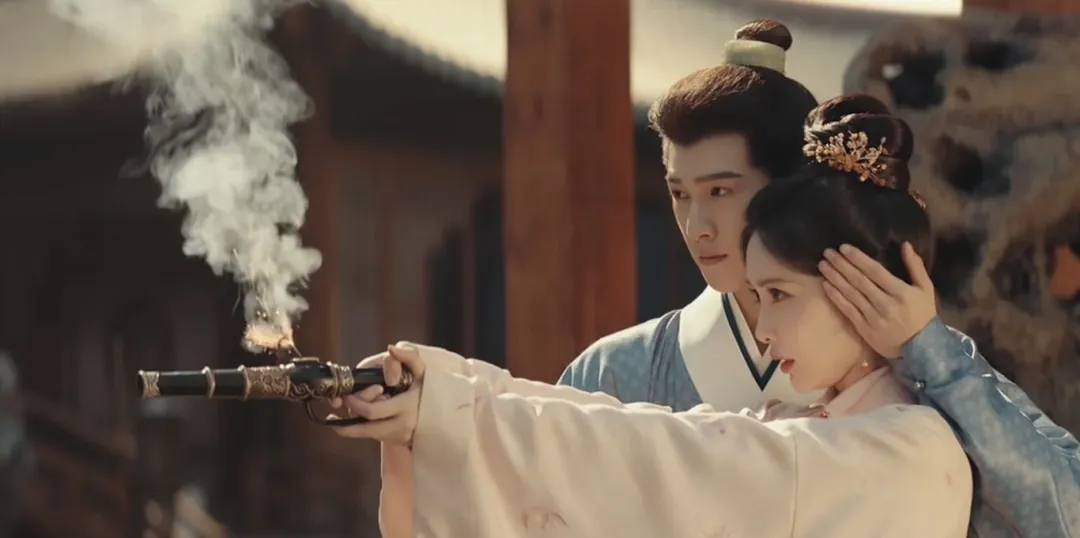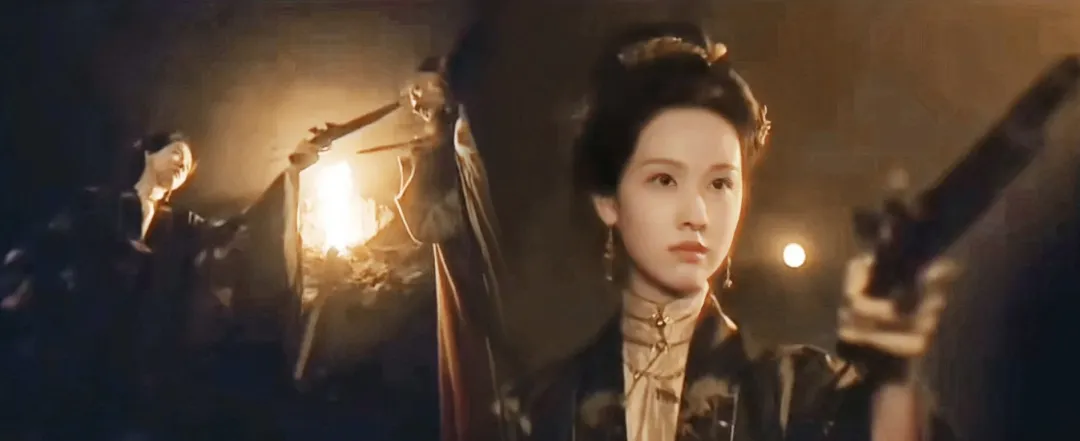
In the ancient - costume drama Yan Hui Shi (雁回时), when Zhuang Hanyan took out a fire - arm, I bet many people's hearts skipped a beat. Netizens wondered, "Where did Yanzi get this fire - arm? Did she borrow it from Fan Xian and Fan Ruoruo?" Actually, fire - arms have appeared in other TV shows like The Longest Day in Chang'an 2 and The Ninth Purple.
Let's start with the conclusion: Our ancient ancestors were not only kind - hearted but also very cool. Fire - arms were first created in the Yuan Dynasty in China, evolved from the fire - lance of the Southern Song Dynasty. They were the world's earliest tubular metal shooting firearms. Yes, by the Ming Dynasty, China had already entered the age of firearms. At this time, you could shout, "My lord, the times have changed!"

During the Yuan Dynasty, the technology of firearm casting had reached a high level. Metal barrels, usually made of bronze or iron, could be produced for firearms. Before Zhu Yuanzhang established the Ming Dynasty, fire - arms were already the main weapon in production. After the founding of the Ming Dynasty, the production of fire - arms was promoted on a large scale. In the 13th year of Hongwu, the Ming government stipulated that 10% of the troops in each guard should be equipped with fire - arms. In the 8th year of Yongle, the Shenjiying (Divine Machine Battalion) was established. All 3,600 infantrymen in it were equipped with firearms. You can just imagine the might of the fire - arm army.
Moreover, the technology of fire - arms was constantly evolving, with both introductions from other regions and self - developed improvements. According to Taizong Shilu Volume 62, during the Yongle period, the Ming army obtained advanced fire - arm manufacturing technology when attacking Annan (now Vietnam). They improved the technology mainly by modifying the barrel, allowing it to hold more gunpowder. Through adjustments such as the inner diameter of the tube, the speed of gunpowder passing through the barrel was increased, thus enhancing the power of the fire - arm.

Da Xue Yan Yi Bu records: "Recently, there is a divine - machine fire - gun. It uses an iron arrowhead and is fired by gunpowder. It can reach more than a hundred steps away. It is as fast and wonderful as a god. You can hear the sound and the arrow arrives immediately. During the Yongle period, when the Ming army pacified Nanjiao, the ones made by the locals there were particularly ingenious. The emperor ordered eunuchs to supervise the manufacturing according to their method. Inside the capital, a great general was in charge of the Shenjiying, and at the border, eunuchs supervised the divine - machine guns. This shows great caution." A fire - arm usually consists of a barrel (front chamber), a powder chamber, and a breech socket. Its working principle is that the gunpowder in the powder chamber is ignited to generate explosive force, which pushes out the objects in the barrel for attack. In The Ninth Purple, when Song Mo taught Dou Zhao to use a fire - arm, he especially reminded her to cover her ears to block the sound caused by the explosion.
Why could women also hold fire - arms? Because some portable fire - arms were not as heavy as you might think. After all, they needed to be held by hand with controllable accuracy. For example, the Yuan - Dynasty copper fire - gun unearthed in Xi'an Dongguan in 1974 was 26.5 cm long and weighed 1.78 kg, which was very convenient to carry. In 1635, Bi Maokang of the Ming Dynasty wrote a firearm book Illustration of Military Weapons. The book listed various firearm designs in detail and described the knowledge of military weapon manufacturing, use, and power with pictures and texts.
The matchlock gun was also a great invention in the improvement of long - range weapons. Traditional fire - arms required two - hand operation: one hand held the slow - match, and the other held the gun. After ignition, the gunpowder was ignited for shooting, making it impossible to aim accurately. The innovation of the matchlock gun lies in its long barrel, bird - beak - shaped stock, and semi - mechanical ignition device, which allowed the shooter to aim closely, greatly improving shooting accuracy, stability, and safety. Its principle is to fix the pre - ignited slow - match beside the powder chamber. When the trigger is pulled, the slow - match falls to ignite the gunpowder, pushing the bullet out. This improvement increased efficiency and lethality, making the matchlock gun the main weapon of the Ming army.
According to Daming Huidian - Firearms, in the 37th year of Jiajing (1558), the Ming Dynasty manufactured as many as 10,000 matchlock guns. From ancient books such as Wu Bei Zhi - Method of Making Firearms and Bing Lu - Properties of Gunpowder for Fire Attacks, we can see that craftsmen recorded the characteristics of gunpowder. For example, "Saltpeter has a vertical property while sulfur has a horizontal property", "Those with a straight property are for long - range attacks, with nine parts of saltpeter and one part of sulfur; those with a horizontal property are for explosive attacks, with seven parts of saltpeter and three parts of sulfur". At that time, they could调配 gunpowder according to different needs to make firearms exert their maximum power.
In addition, there were mainly two types of firearm equipment in the Ming Dynasty: hand - held and cannon - mounted. Besides traditional fire - arms and matchlock guns, there were also three - eyed guns, volley fire arrows, repeating cannons, tiger - crouching cannons, long - range curved - shooting cannons, large - iron - bullet flat - shooting cannons, and explosive weapons such as landmines and naval mines. It can be said that the development of firearms in the Ming Dynasty was more advanced than many people imagined.
So, don't be too surprised when you see fire - arms in Ming - Dynasty dramas. After all, it was once an invention leading the world. Today, I'm once again shocked by the wisdom of our ancestors.
